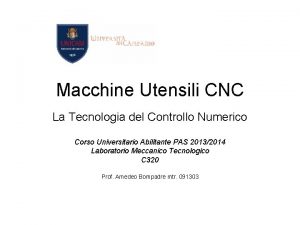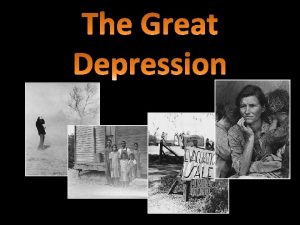www hoddereducation co ukgeographyreview Cape Towns Day Zero













- Slides: 13

www. hoddereducation. co. uk/geographyreview Cape Town’s Day Zero A water security issue at a local scale (with a link to the carbon cycle) David Redfern Hodder & Stoughton © 2019

Introduction This presentation supports the article in GEOGRAPHY REVIEW Vol. 32, No. 3, ‘Water security across borders: two international case studies’ Hodder & Stoughton © 2019

What is Day Zero? • ‘Day Zero’ is the name given to the day when Cape Town may ‘run out of water’ in the near future. It has not happened yet. • ‘Day Zero’ is set to occur when water levels in supplying dams fall to 13. 5% of capacity. • Cape Province (which includes the city of Cape Town) has a Mediterranean climate, with warm wet winters (May to August) and hot dry summers (November to February). • During the last 3 years rainfall has been at very low levels, while the city (4 million people) and the surrounding countryside have continued to use water for domestic use and for farming (fruits and vineyards) (see article). Hodder & Stoughton © 2019

The Western Cape vineyards Note the small reservoirs used for irrigation Hodder & Stoughton © 2016

What is the situation? • In June 2018, the mayor of Cape Town announced that Day Zero would not happen in either 2018 or 2019. • Water levels in supplying dams had risen and the city was in a much stronger position than it had been at the end of 2017. Dams were over 50% full in the summer of 2018 and had reached 70% capacity by November 2018. • Water-demand management schemes and increasing communication will continue together with an increased awareness of the need for behavioural change. • Water restrictions of 50 litres of water person are continuing: 90 -second showers, flushing toilets once a day, using hand sanitisers in cafés/restaurants instead of washing hands. Hodder & Stoughton © 2019

Changes in water use (Cape Town) 2014– 2017 This graph shows water use per household in Cape Town between 2014 and 2017 by economic quintile of the population. The first quintile is the richest, the second quintile second richest and so on. Note how water use has equalled out regardless of wealth. Source: Environment for Development (Ef. D) Hodder & Stoughton © 2019

Impacts on tourism • Tourism to the area has reduced. • Cape Town and the Western Cape usually receive over 1. 5 million international tourists and 2. 1 million South African tourists a year. • Tourist revenues have fallen by up to 20%. • 300, 000 people rely on tourism across Cape Province. A cable car ascending Table Mountain Hodder & Stoughton © 2019

The Molteno Reservoir • The reservoir is behind a small but historic dam, on the lower slopes of Table Mountain, Cape Town. • The reservoir is still in use — it is one of a series of small reservoirs in the city. • It is fed by a natural spring (there are 20 springs in the city). • A network of channels and grachts (a Dutch word meaning water courses) were constructed across the city. • A programme is underway to restore these historic water systems. Hodder & Stoughton © 2019

Cape Town from the top of Table Mountain Cape Town soccer stadium Molteno Reservoir Hodder & Stoughton © 2016 Cape Town’s CBD

Water use in the townships • Extensive areas of townships exist on the Cape Flats, near the city (to the right of the previous photograph). These are occupied mostly by black people with low incomes. • These townships collectively use only 4% of Cape Town’s water. • However, in some parts of the townships, water containers and solar heaters are being placed on new housing blocks. • These help store clean water, provide hot water and reduce electricity bills for the residents. • Construction and maintenance jobs have been created for the townships. Originally imported from China, the kit is now being manufactured in South Africa. • As a bonus, carbon emissions are also being reduced. Hodder & Stoughton © 2019

Langa Township (known locally as ‘Beverley Hills’) Note the water containers and solar panels on the new houses Hodder & Stoughton © 2016

Solutions? Proposed solutions to the water deficit have included: • Dragging a 100 million tonne iceberg from the Antarctic — making use of the cold Benguela ocean current. It is thought that much of the iceberg would be conserved over a journey of over 1, 000 nautical miles. • Transferring water over 4, 000 km from the Congo River — fraught with practical and political difficulty. • Enlarging the size of the supplying dams. • Encouraging more water reuse and building desalination plants. • Increasing borehole drilling — many richer white people own their own private boreholes. Hodder & Stoughton © 2019

This resource is part of GEOGRAPHY REVIEW, a magazine written for A-level students by subject experts. To subscribe to the full magazine go to: http: //www. hoddereducation. co. uk/geographyreview Photographs: David Redfern Background image: Juri/Adobe Stock Hodder & Stoughton© 2019
 Day 1 day 2 day 3 day 4
Day 1 day 2 day 3 day 4 Www.hoddereducation.co.uk
Www.hoddereducation.co.uk Negative feedback loop geography
Negative feedback loop geography Ansoff matrix dyson
Ansoff matrix dyson Www hoddereducation com
Www hoddereducation com Www hoddereducation com
Www hoddereducation com Day 1 day 2 day 817
Day 1 day 2 day 817 Zero defect zero effect
Zero defect zero effect Codici g fanuc
Codici g fanuc Hoover towns
Hoover towns Progetto elmer scuola primaria
Progetto elmer scuola primaria Schuller's view mastoid
Schuller's view mastoid Mon forest towns
Mon forest towns Towns near dedham ma
Towns near dedham ma
























